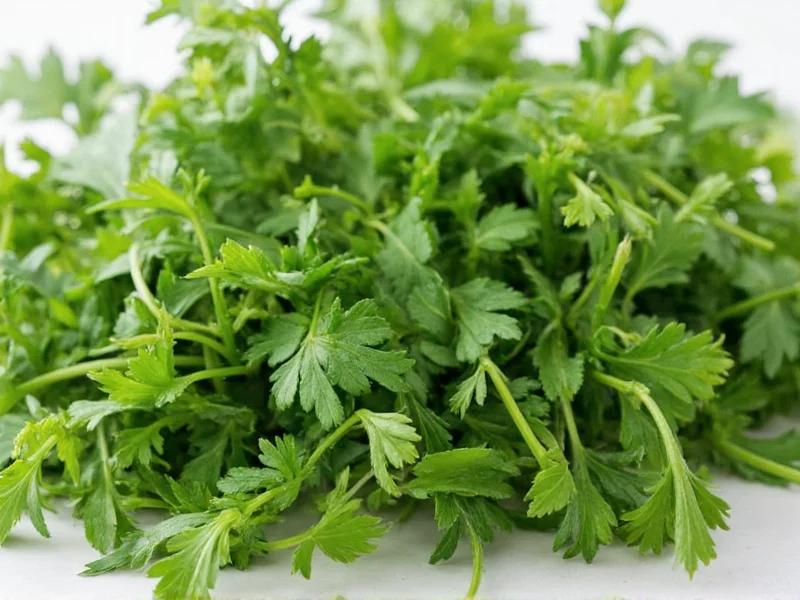When you're preparing a classic béarnaise sauce or coq au vin and realize you're out of tarragon, knowing reliable substitutes becomes essential. Tarragon's unique flavor profile—slightly sweet with anise and vanilla notes—makes it challenging to replace, but several herbs and spice combinations can effectively mimic its distinctive taste in various culinary applications.
Understanding why you need a tarragon alternative matters. French tarragon (Artemisia dracunculus) is the culinary variety prized for its complex flavor, while Russian tarragon offers a much milder, almost grassy taste. Many home gardeners accidentally grow the less flavorful Russian variety, making substitution knowledge valuable even when you think you have tarragon available.
Understanding Tarragon's Unique Flavor Profile
Tarragon contains estragole, the same compound found in anise and fennel, which creates its signature licorice-like undertone. This distinctive flavor enhances poultry, fish, eggs, and vegetable dishes while balancing acidity in vinaigrettes. When seeking tarragon alternatives, you're essentially looking for herbs that provide either that anise note or the herb's overall complexity in different applications.
Top Tarragon Substitutes Ranked by Effectiveness
Not all tarragon alternatives work equally well across recipes. The best substitute depends on whether you're using fresh or dried tarragon and the specific dish you're preparing. Here's a comprehensive comparison of viable options:
| Alternative | Flavor Comparison | Best For | Substitution Ratio | Special Notes |
|---|---|---|---|---|
| Chervil | Closest match with mild anise notes | Fresh applications, sauces, salads | 1:1 fresh | Add parsley for color and body |
| Basil + Marjoram | Combines sweet and herbal notes | Dried tarragon replacement | ½ basil + ½ marjoram | Best for cooked dishes |
| Fennel Fronds | Strong anise flavor | Fish, roasted vegetables | ⅔ fennel fronds | Use sparingly—stronger than tarragon |
| Dill + Thyme | Herbal with slight sweetness | Egg dishes, dressings | ⅔ dill + ⅓ thyme | Add lemon zest for brightness |
| Tarragon Vinegar | Concentrated tarragon flavor | Dressings, marinades | 1 tbsp vinegar = 1 tsp herb | Reduce other liquids accordingly |
Recipe-Specific Tarragon Substitution Guide
The ideal tarragon alternative varies significantly based on your dish. Understanding these nuances prevents disappointing results when replacing this distinctive herb.
For Béarnaise and Other Egg-Based Sauces
Chervil provides the closest flavor match for delicate sauces where tarragon shines. Use equal parts chervil and parsley to maintain the visual appeal while capturing tarragon's essence. If chervil isn't available, a small amount of fennel pollen (⅛ teaspoon) blended with parsley creates an impressive approximation for béarnaise sauce without overwhelming the delicate emulsion.
For Chicken and Poultry Dishes
When seeking a tarragon substitute for chicken recipes, combine marjoram and a touch of basil. Use three parts marjoram to one part basil for the most authentic flavor profile. This combination works particularly well in roasted chicken dishes and chicken salad recipes where tarragon typically plays a starring role.
For Fish and Seafood Preparations
Fennel fronds offer the best tarragon alternative for fish dishes, especially when grilling or baking. The natural anise notes complement seafood beautifully. Use fennel fronds at a 2:3 ratio (two parts fennel for every three parts tarragon called for) since their flavor is more pronounced. The feathery fronds also provide similar visual appeal to tarragon in finished dishes.
Creating Your Own Tarragon Substitute Blend
For consistent results across multiple recipes, create a versatile tarragon replacement blend you can keep on hand. Combine these dried herbs in the following proportions:
- 2 parts marjoram
- 1 part basil
- ½ part thyme
- ¼ part fennel seed (finely ground)
Store this mixture in an airtight container away from light. This blend works particularly well as a dried tarragon alternative in spice rubs, soups, and stews where fresh herbs would lose their distinctive qualities during cooking. For every teaspoon of dried tarragon required, use 1½ teaspoons of this blend.
Common Tarragon Substitution Mistakes to Avoid
Many home cooks make critical errors when replacing tarragon that compromise their dishes. Understanding these pitfalls ensures better results:
- Overusing dill—While dill shares some flavor characteristics, it's significantly more pungent and can easily dominate a dish
- Ignoring freshness factors—Dried herb substitutes require different ratios than fresh alternatives
- Mixing incompatible herbs—Combining rosemary with potential substitutes creates conflicting flavor profiles
- Adding substitutes too early—Delicate alternatives like chervil should be added at the end of cooking
Remember that no single herb perfectly replicates tarragon's complex flavor. The most successful tarragon alternatives typically involve strategic combinations that address both the anise note and the herb's overall aromatic profile.
When to Seek Professional Culinary Solutions
For specialty applications like classic French sauces or delicate herb vinegars, consider these professional approaches to tarragon substitution. Chefs often create tarragon-infused oils using fennel pollen and chervil to capture the essence without the fresh herb. When preparing large batches of dishes requiring consistent flavor, make a concentrated tarragon alternative paste with your chosen substitutes and a small amount of neutral oil—this preserves the flavors better than dried herbs alone and provides more consistent results across multiple preparations.











 浙公网安备
33010002000092号
浙公网安备
33010002000092号 浙B2-20120091-4
浙B2-20120091-4